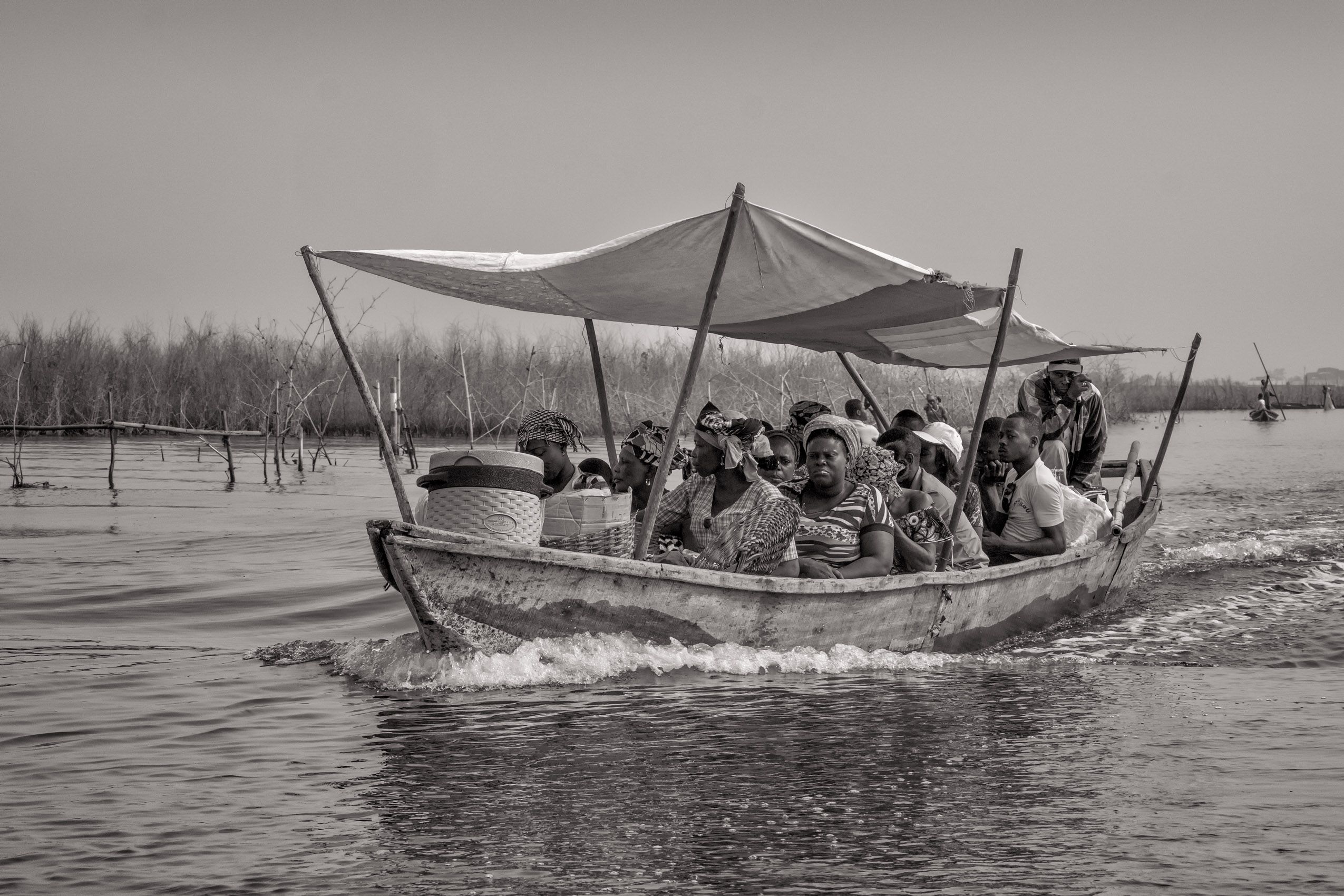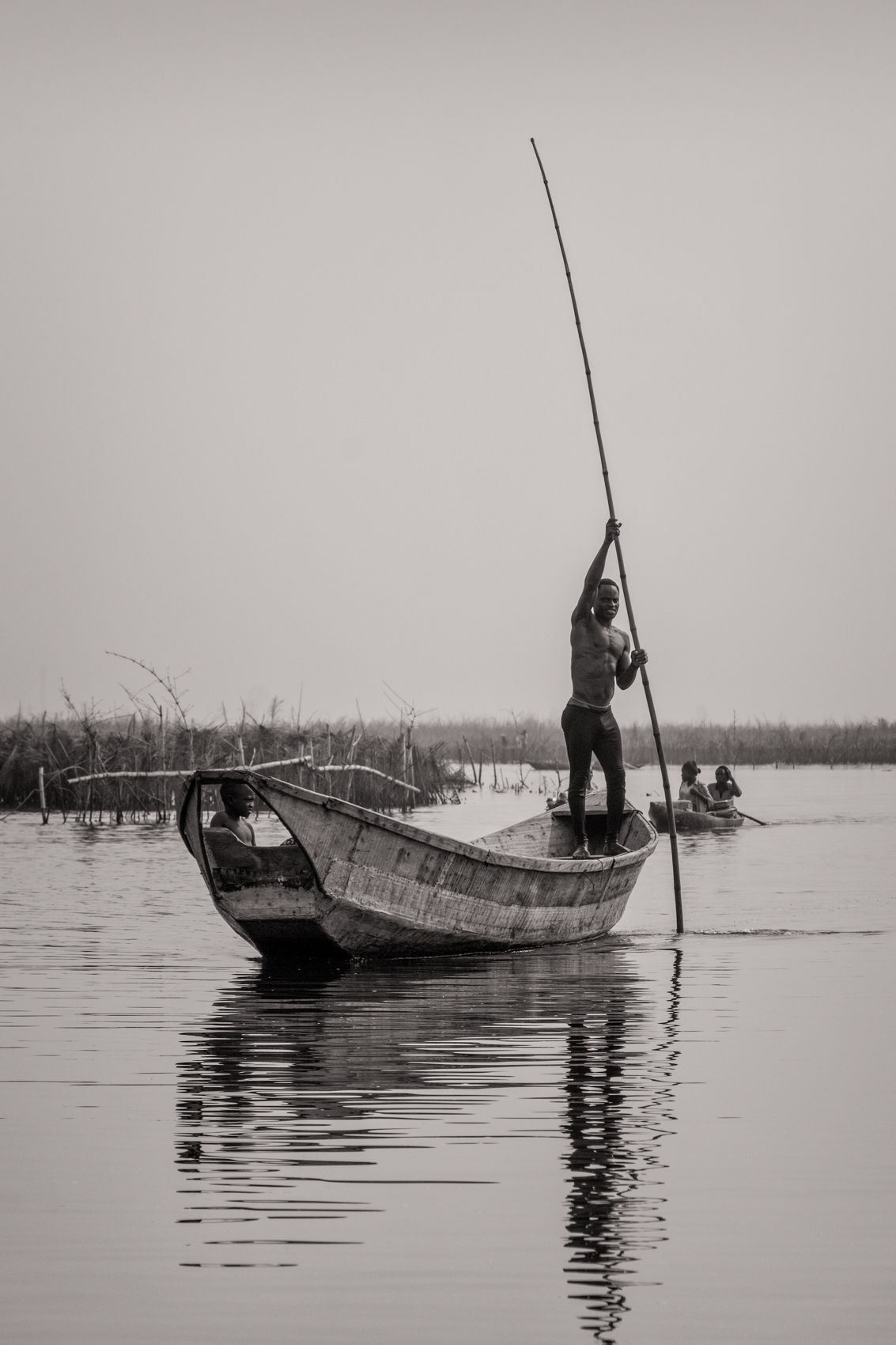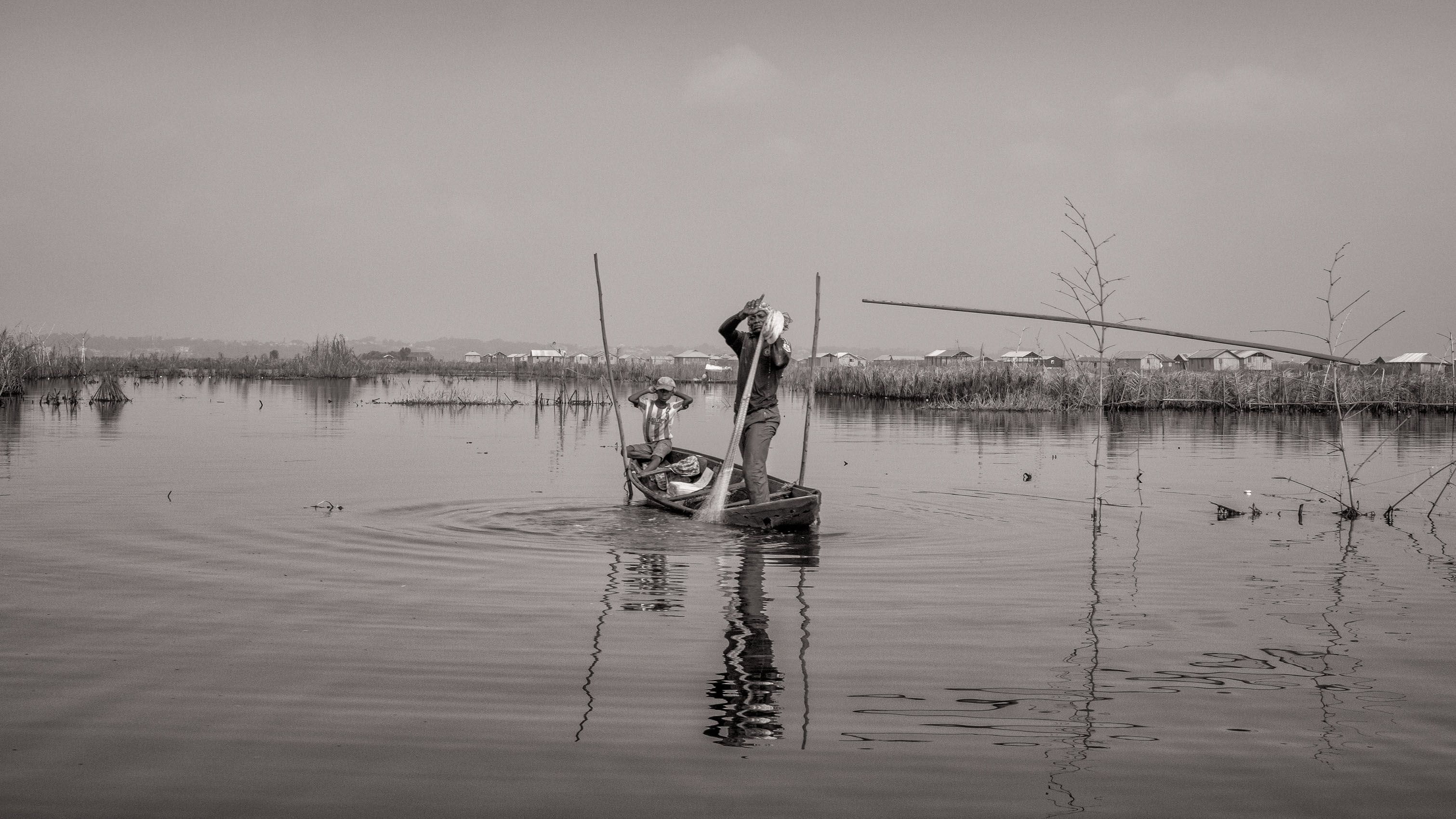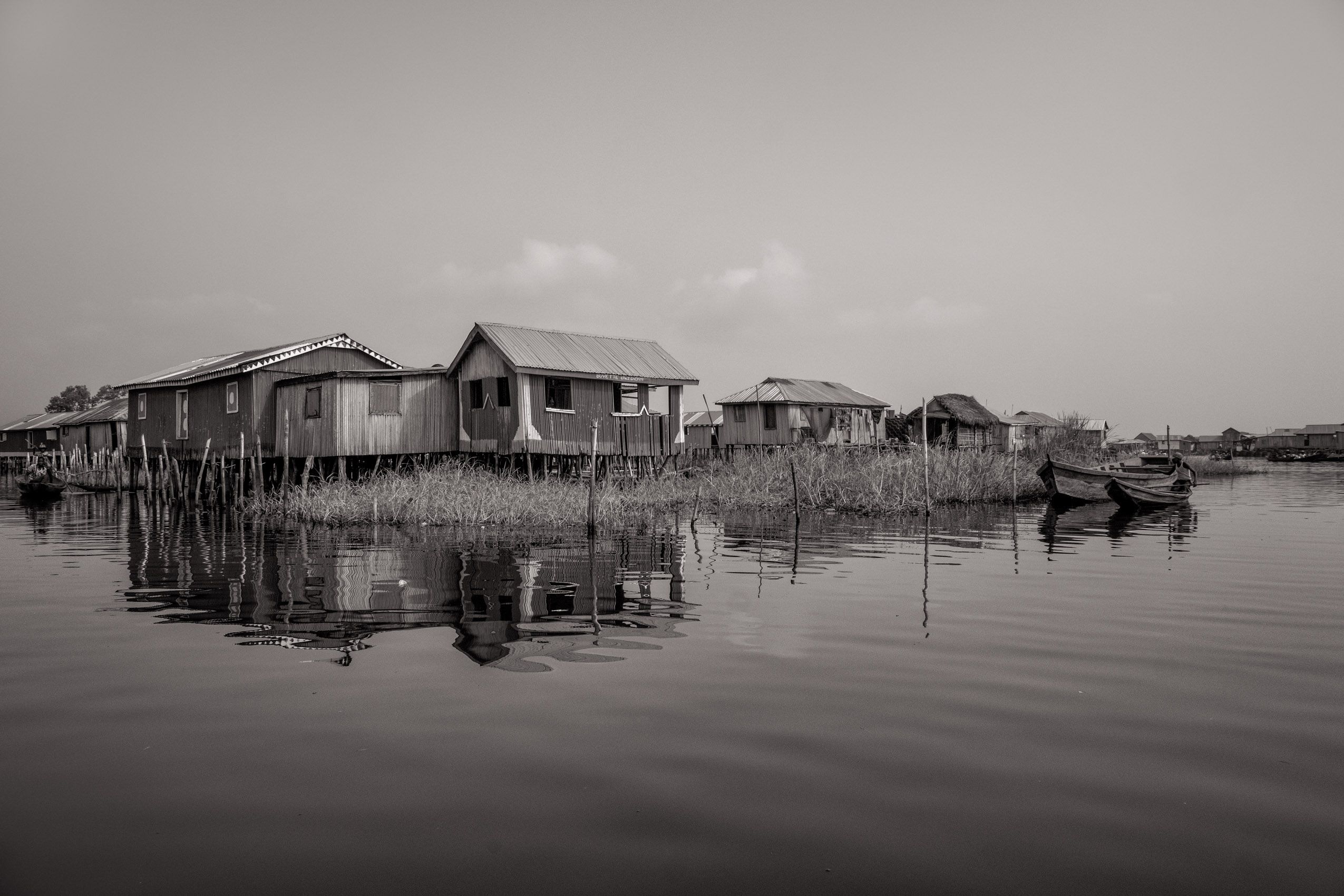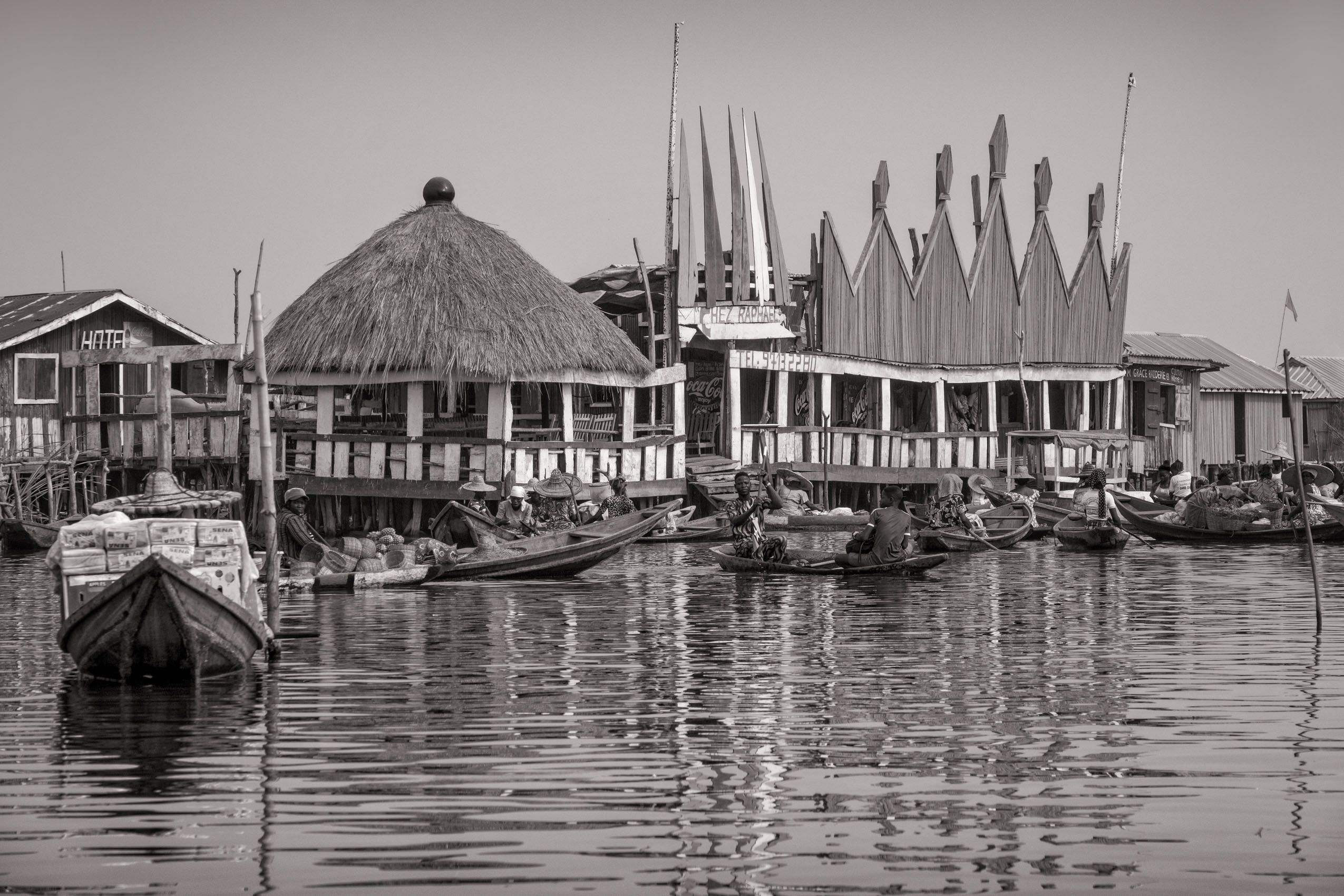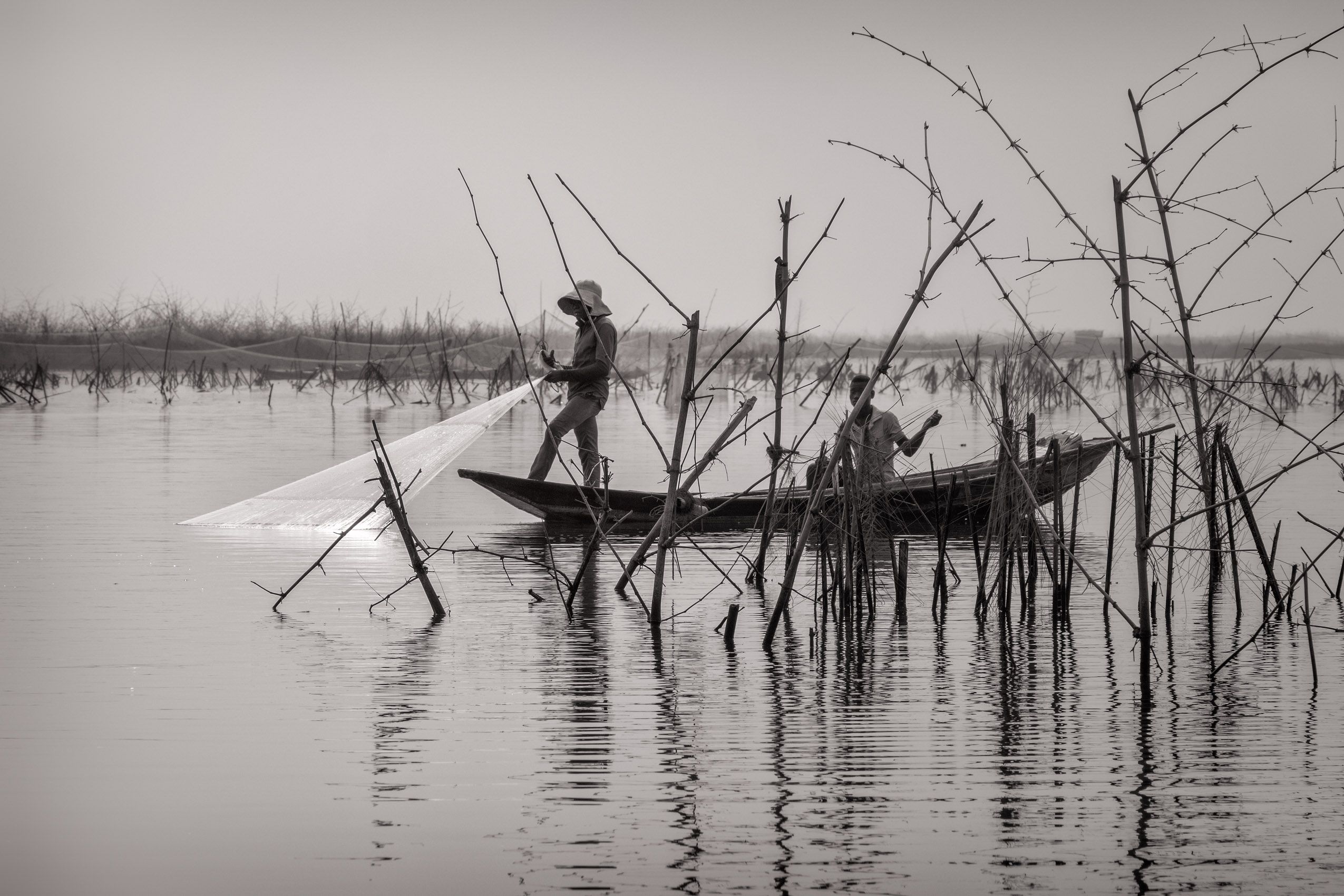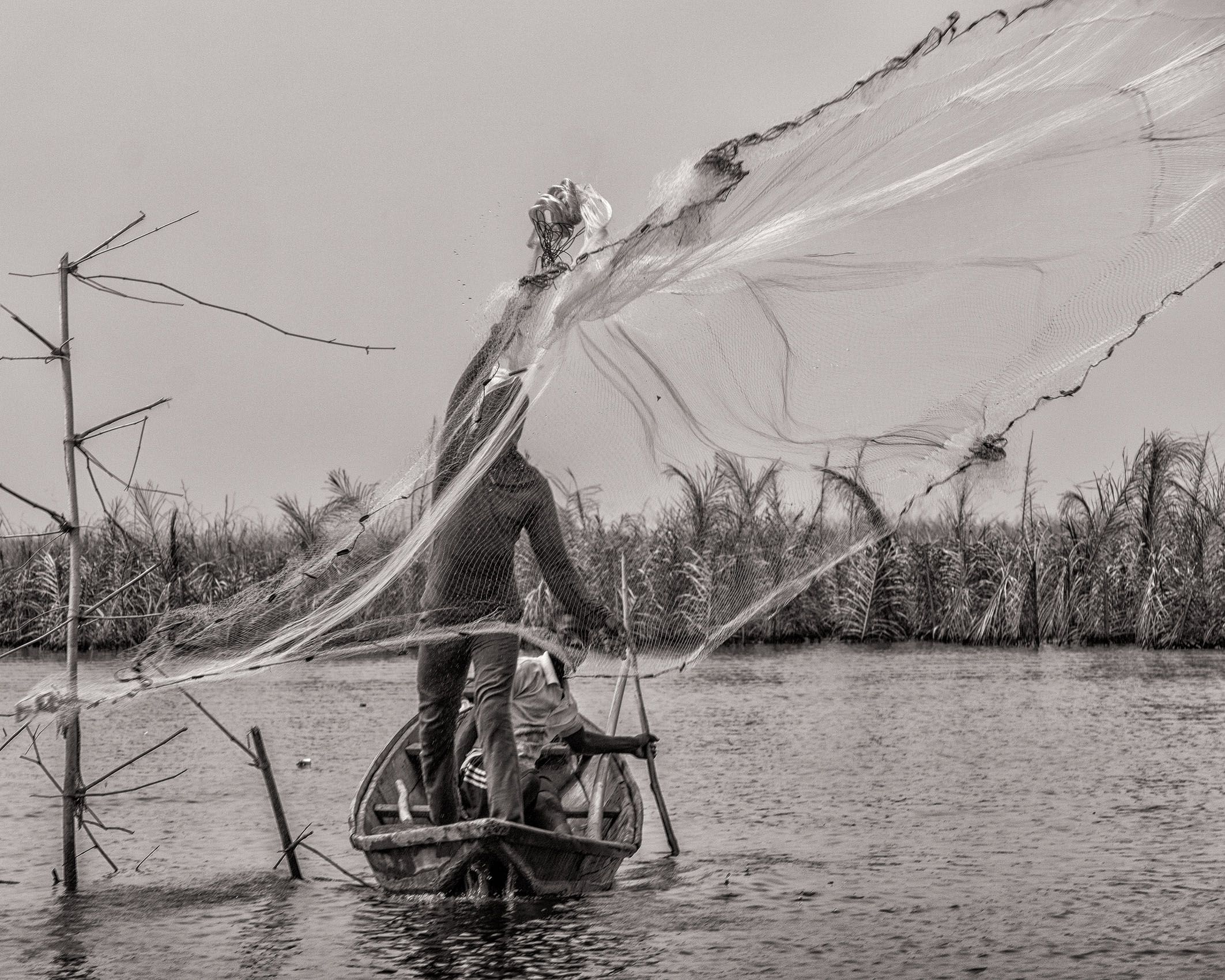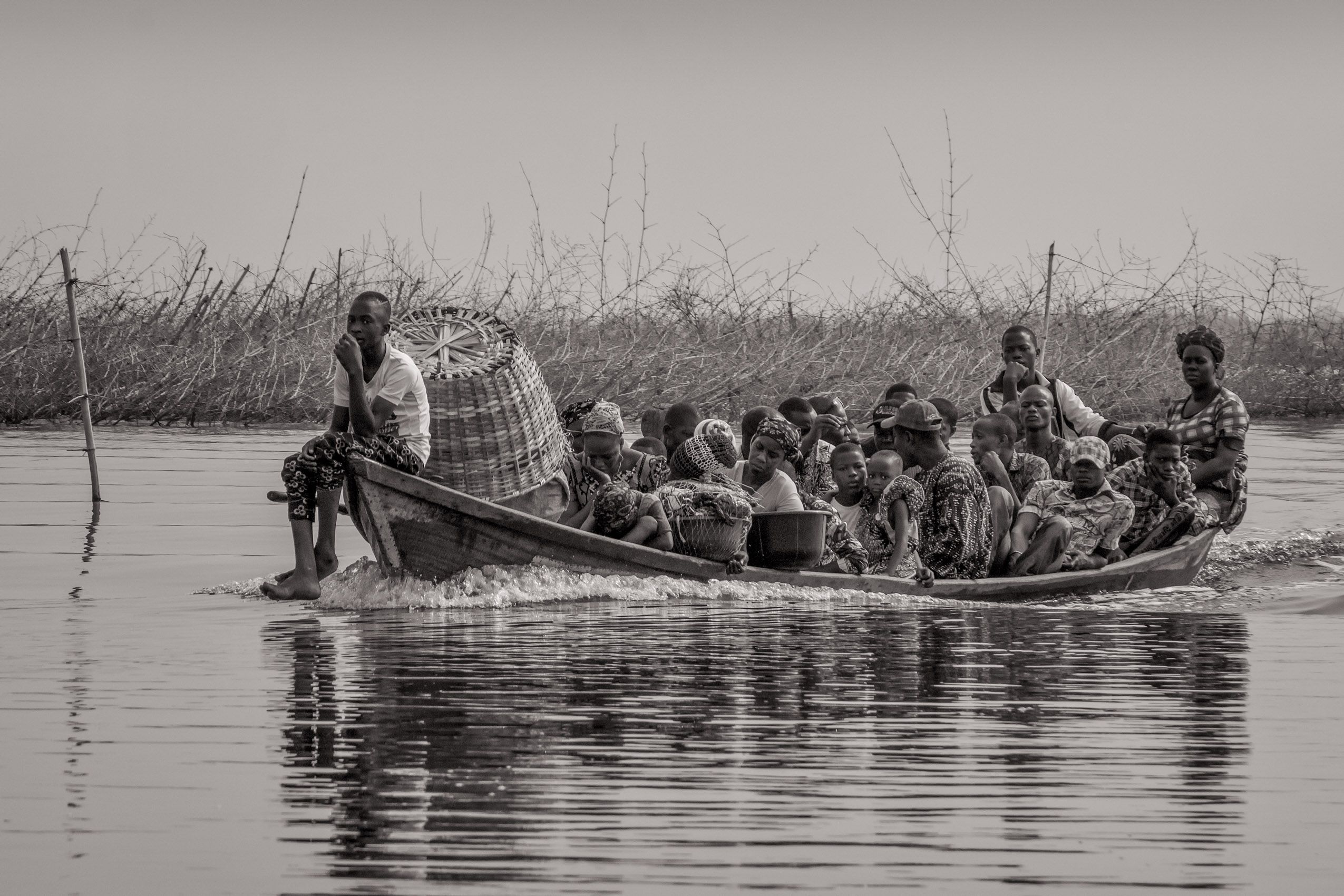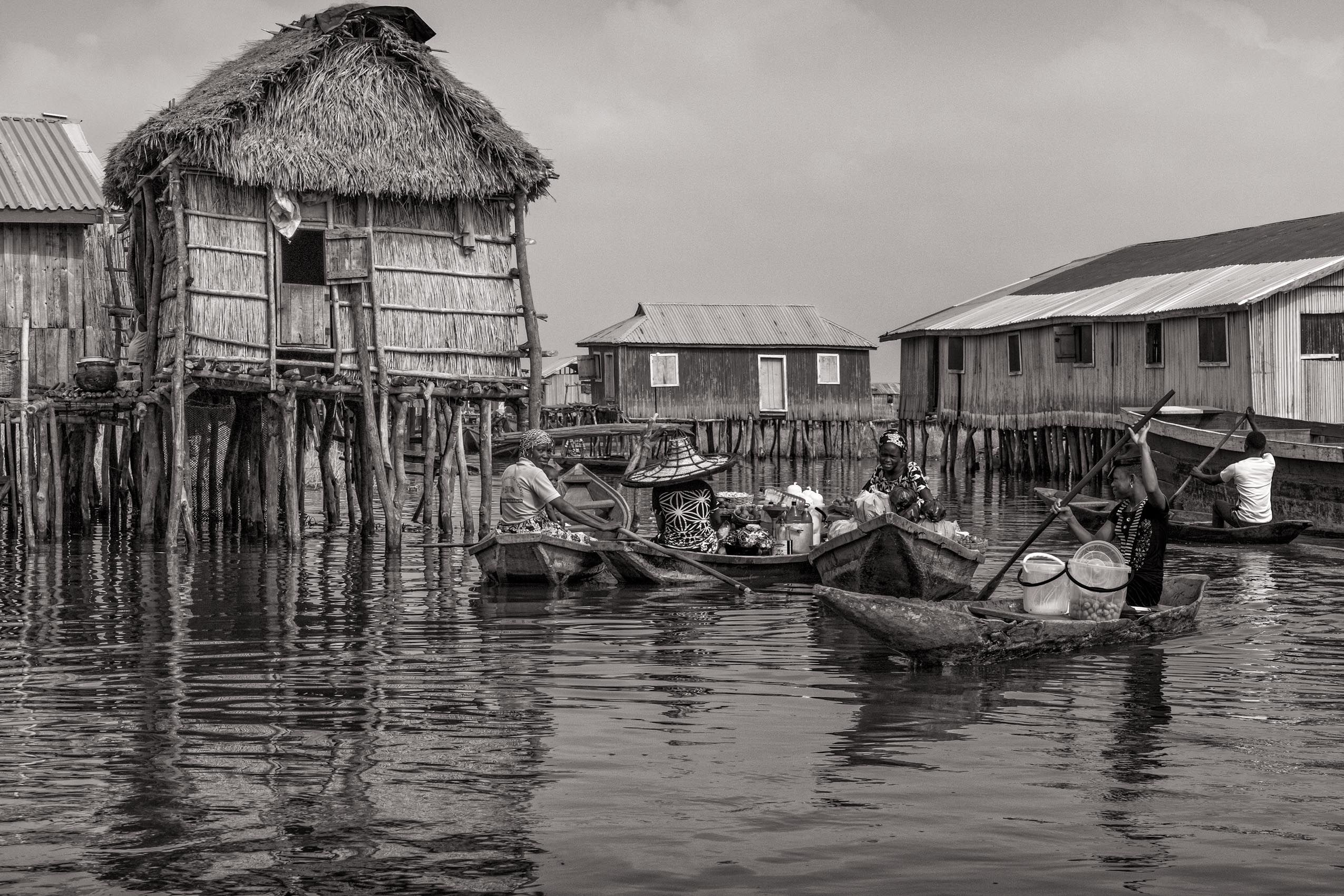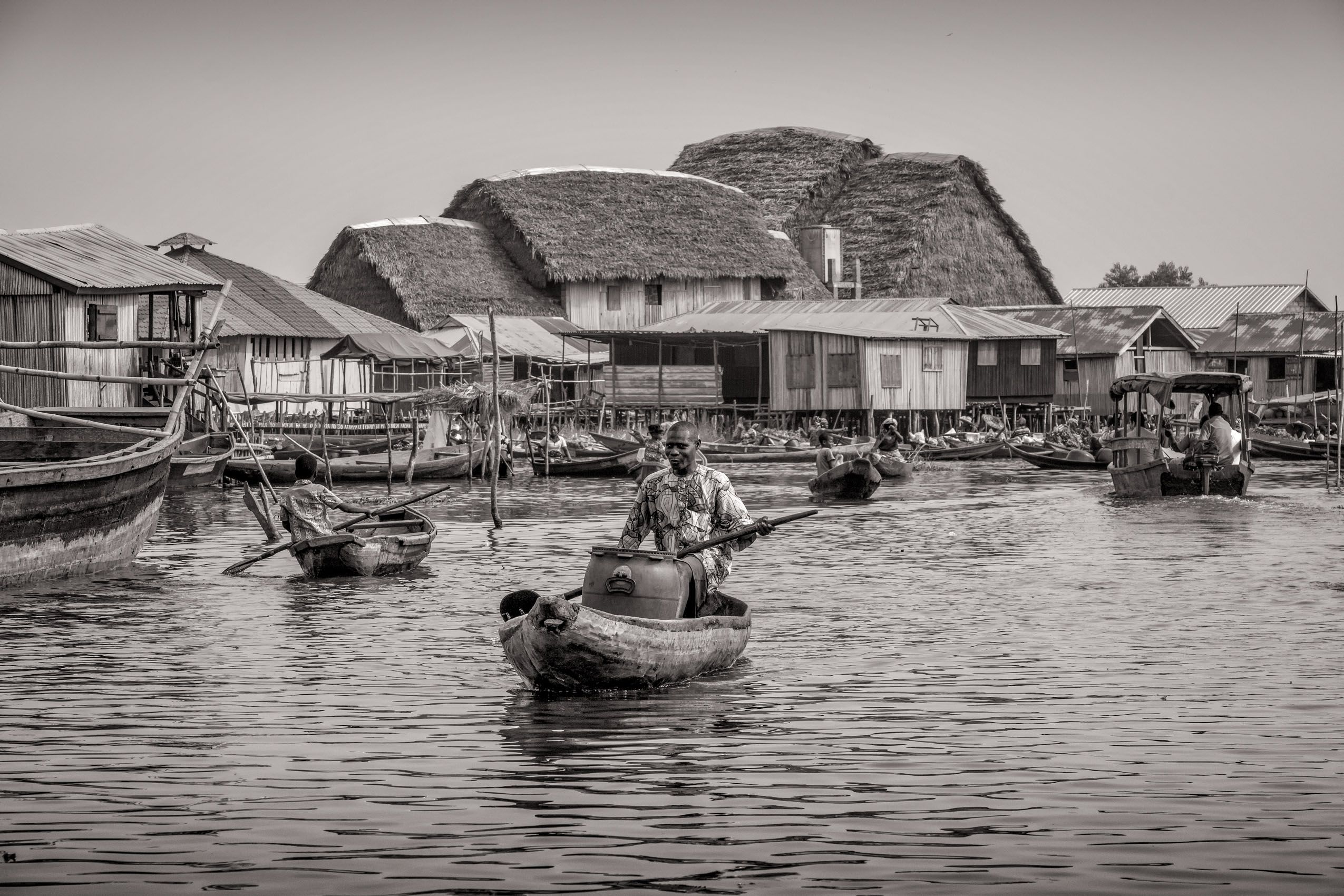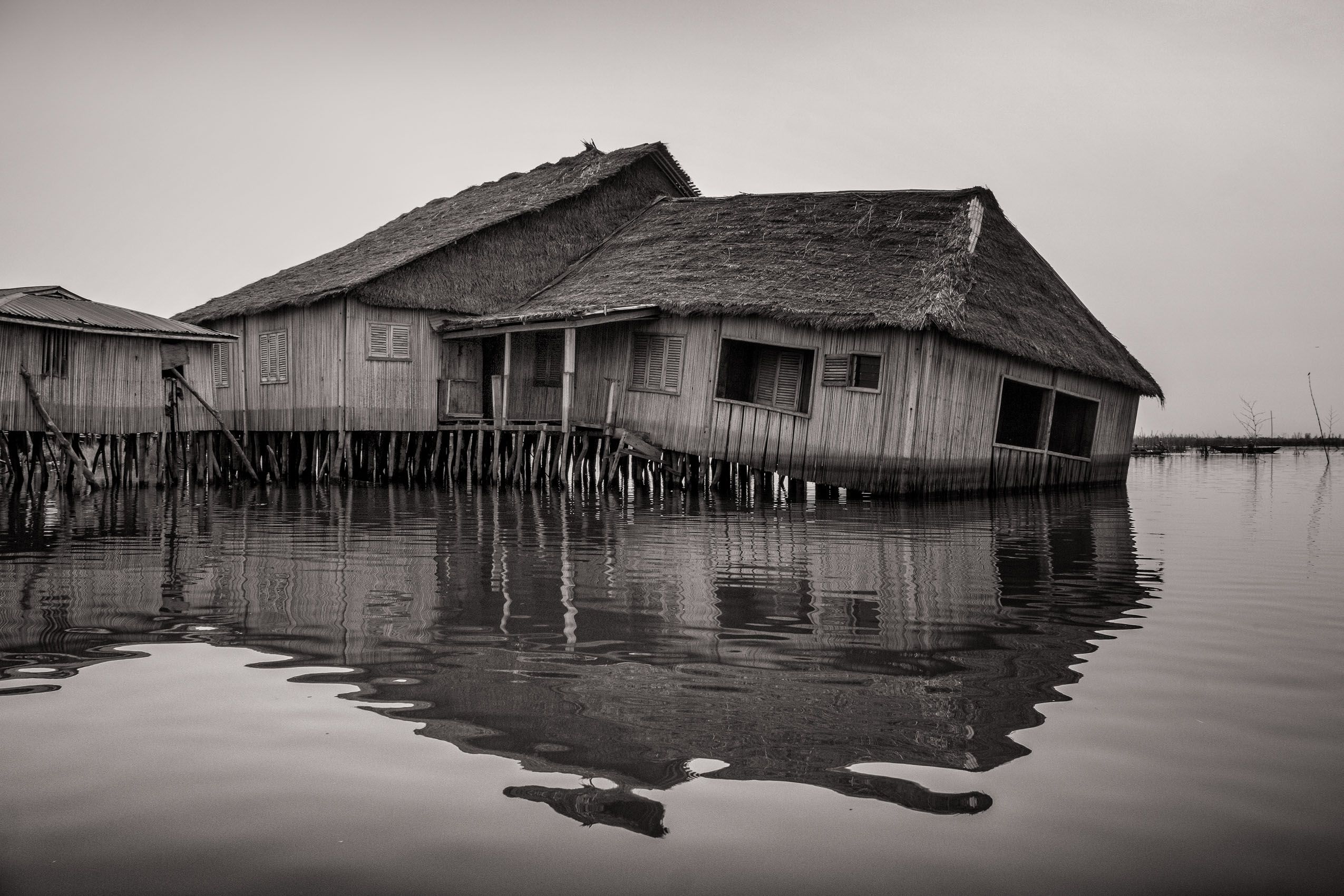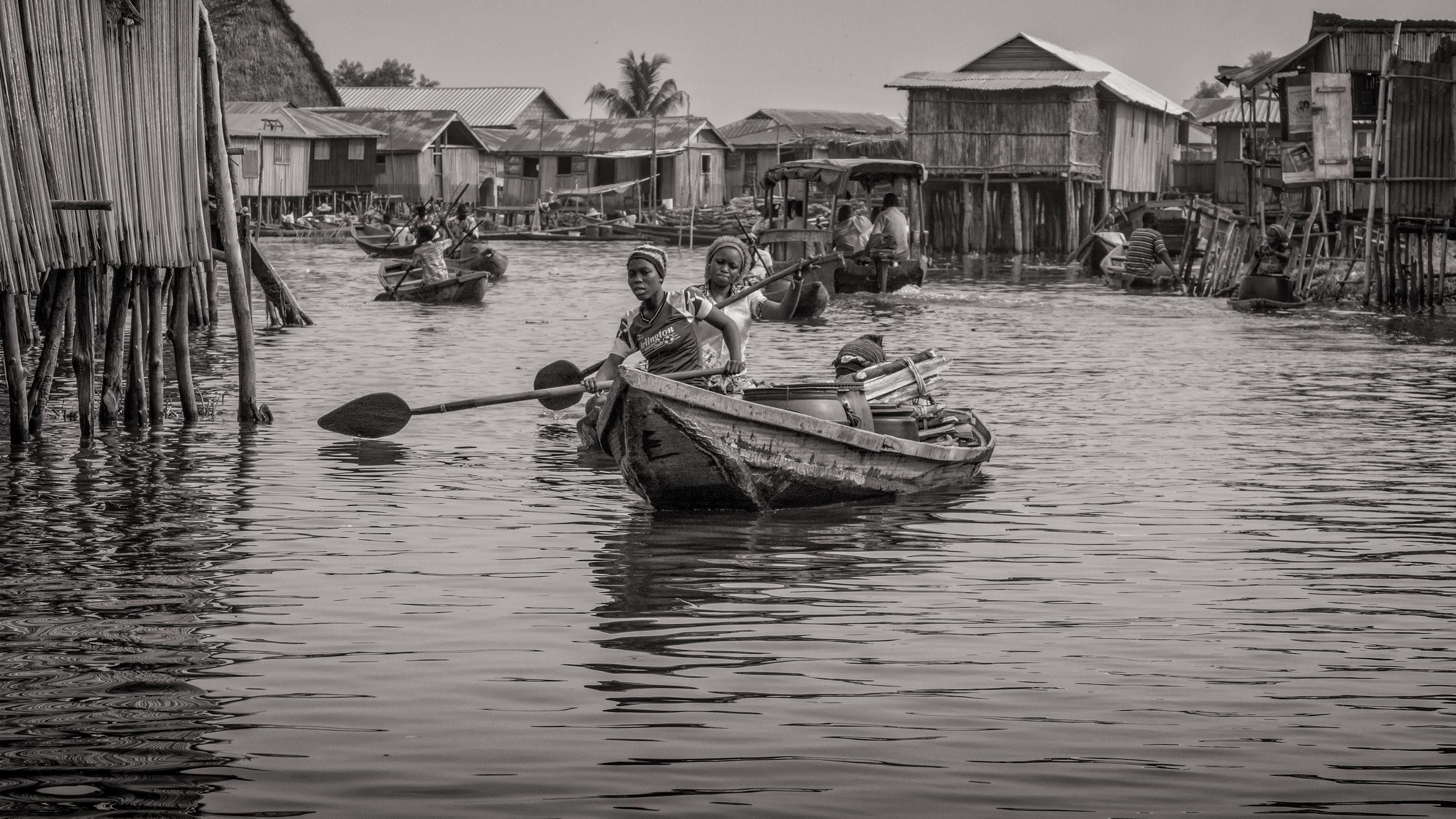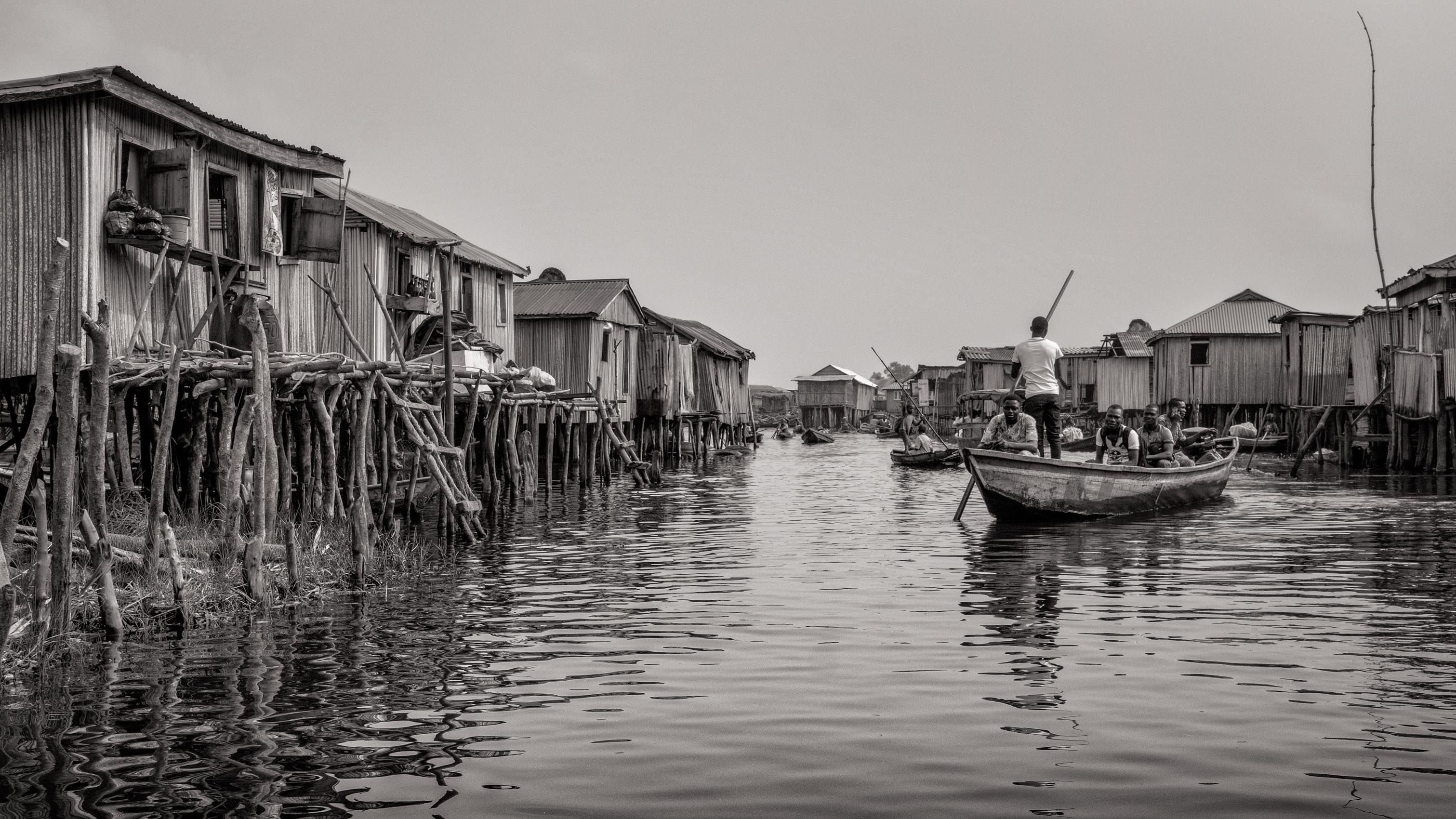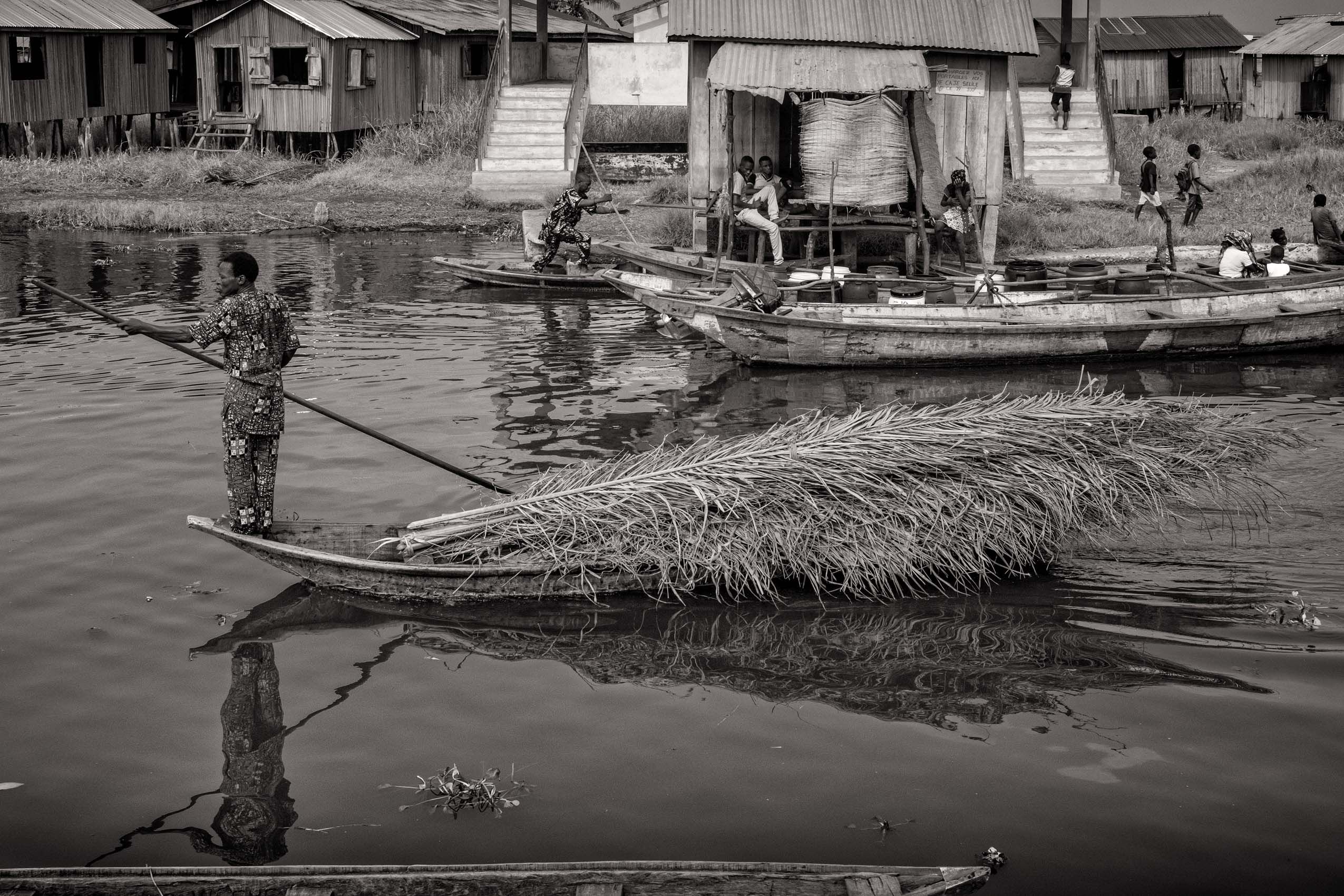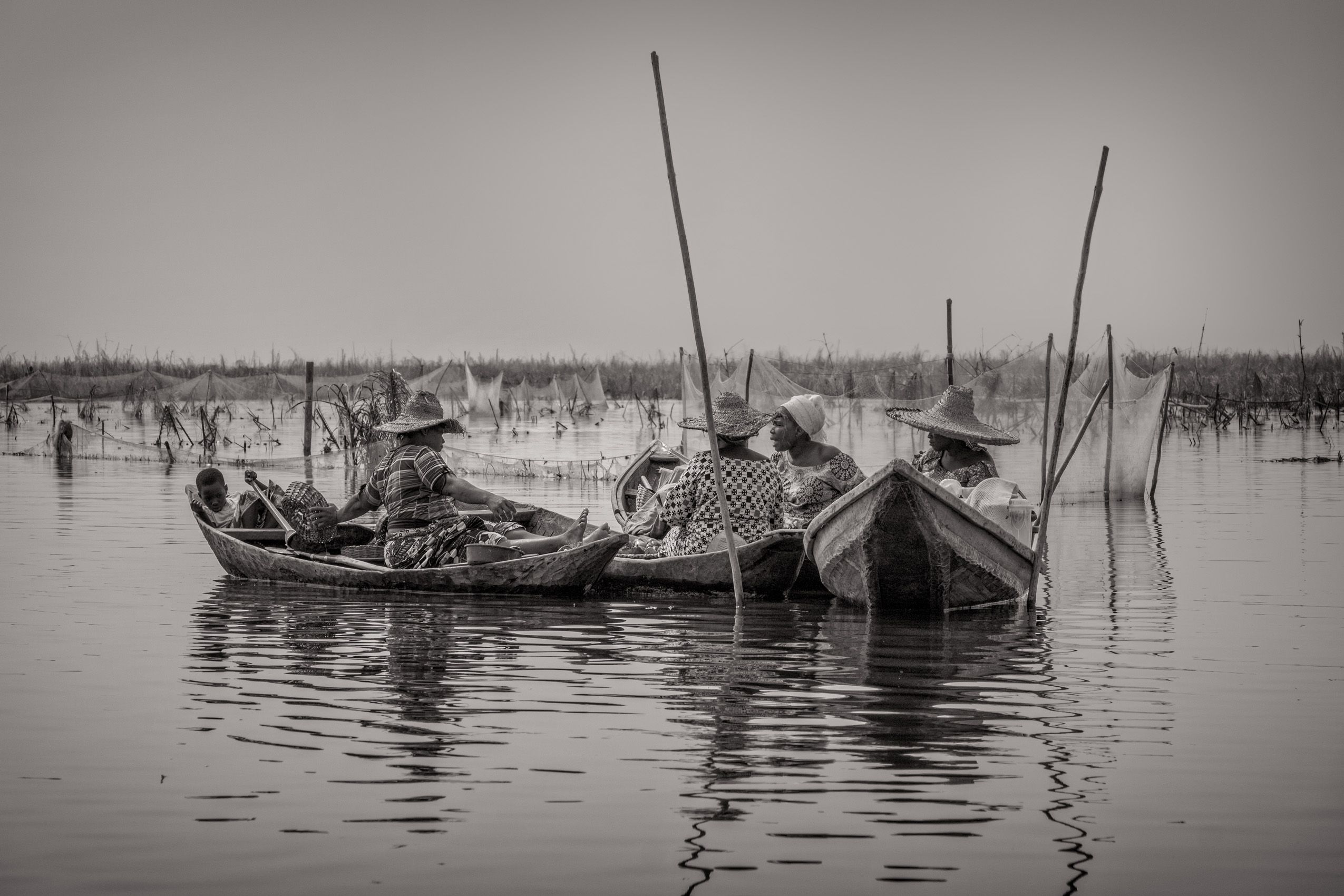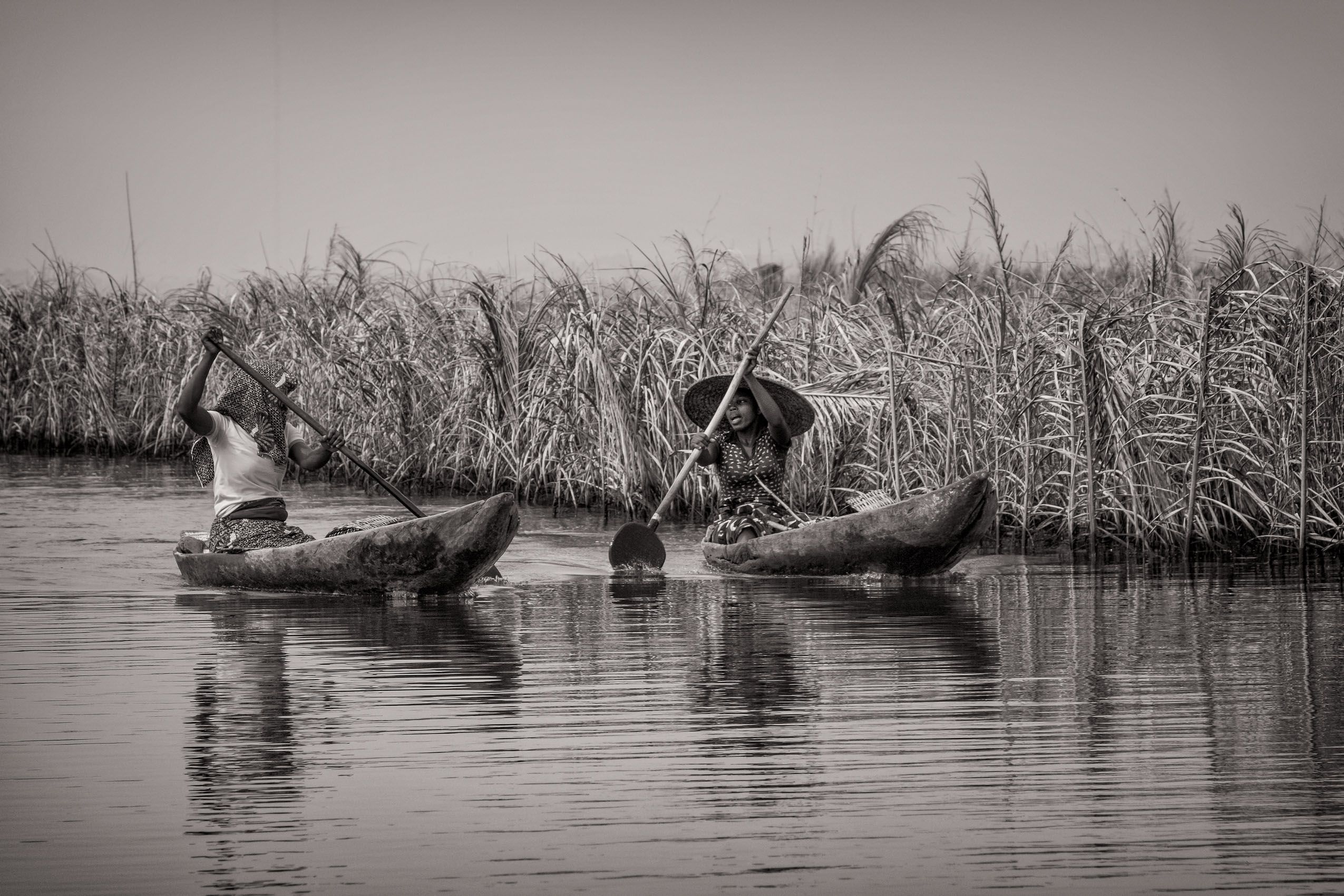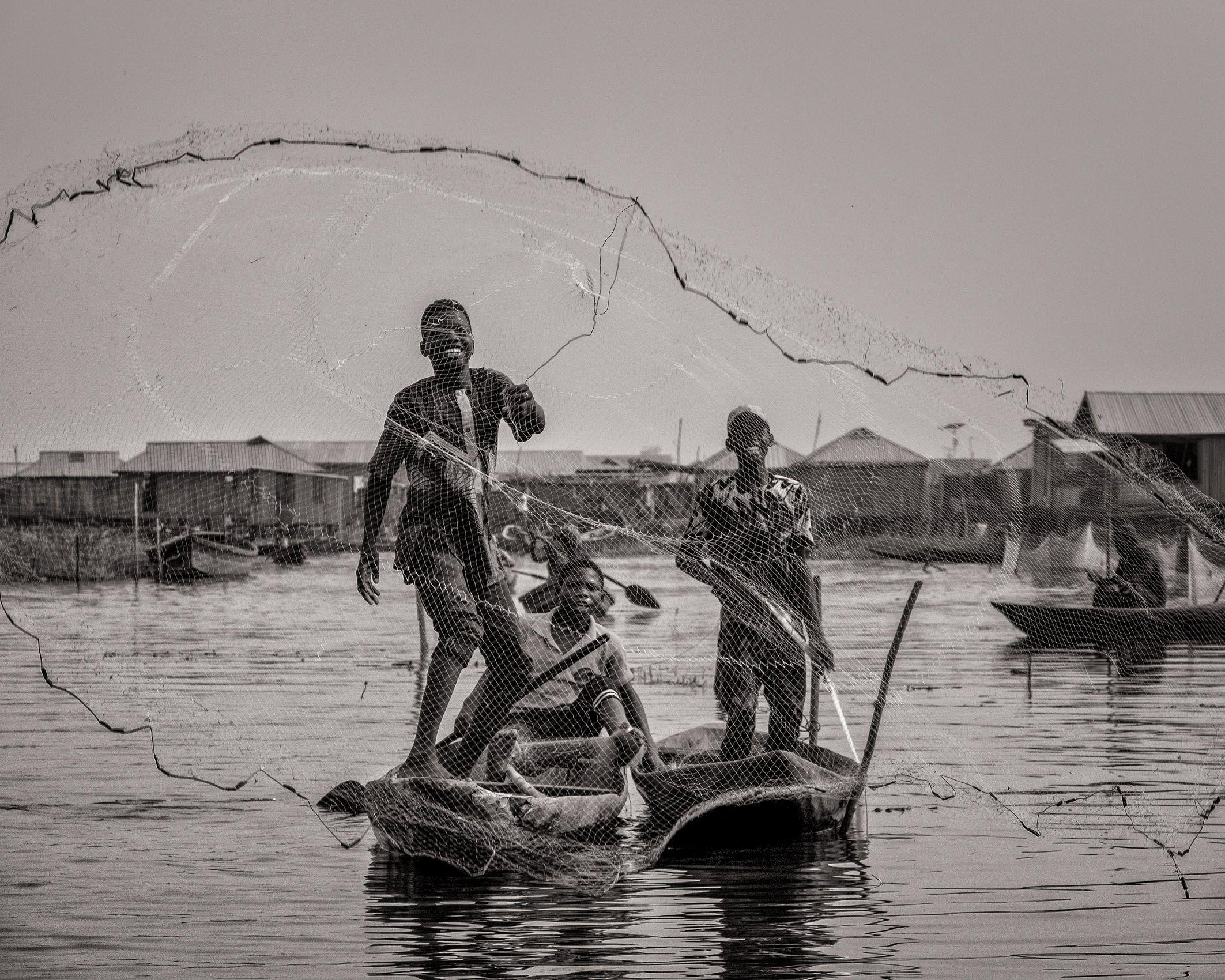BENIN: Ganvie: Living on Water
Ganvie is a large waterborne village of roughly 20,000 inhabitants, built on stilts in the middle of Lake Nakoue, near Cotonou in Benin. It is Africa’s largest lake village, and dates from the sixteenth century. Its origins are intimately connected to the West African slave trade and to the complex interplay of culture and economy that it entailed. Ganvie was founded by the Tofinu people as a refuge from Fon warriors, who habitually raided other groups in order to sell them to the Portuguese. It so happened that in Fon culture there was a religious proscription against raiding people dwelling on water, and as a consequence Ganvie was a sanctuary from enslavement. Today, Ganvie appears to be a place of stability and relative prosperity, its economy based on fishing and fish farming. Life here exists almost entirely upon the water, and all transport is by boat. Ganvie is now preposterously but predictably marketed to tourists as “The Venice of Africa.” But unlike the beautifully decaying and now grossly over-touristed city on the Adriatic, humble Ganvie has the distinct advantage of remaining a vibrant indigenous community.

